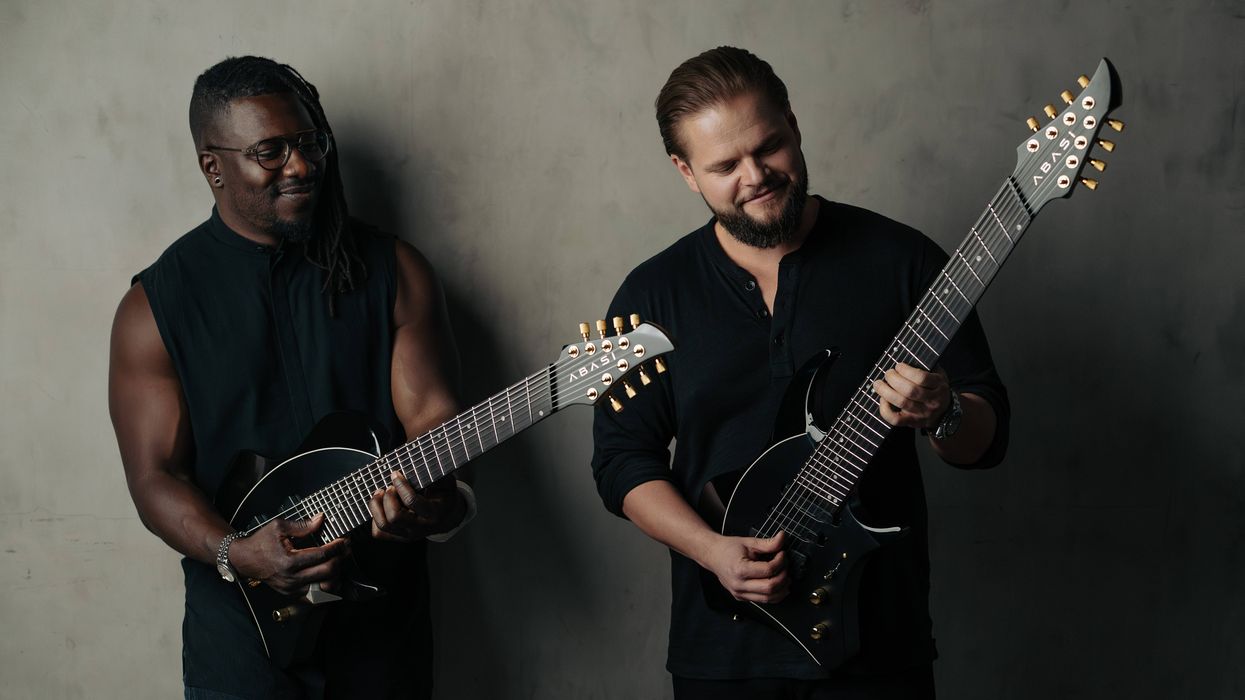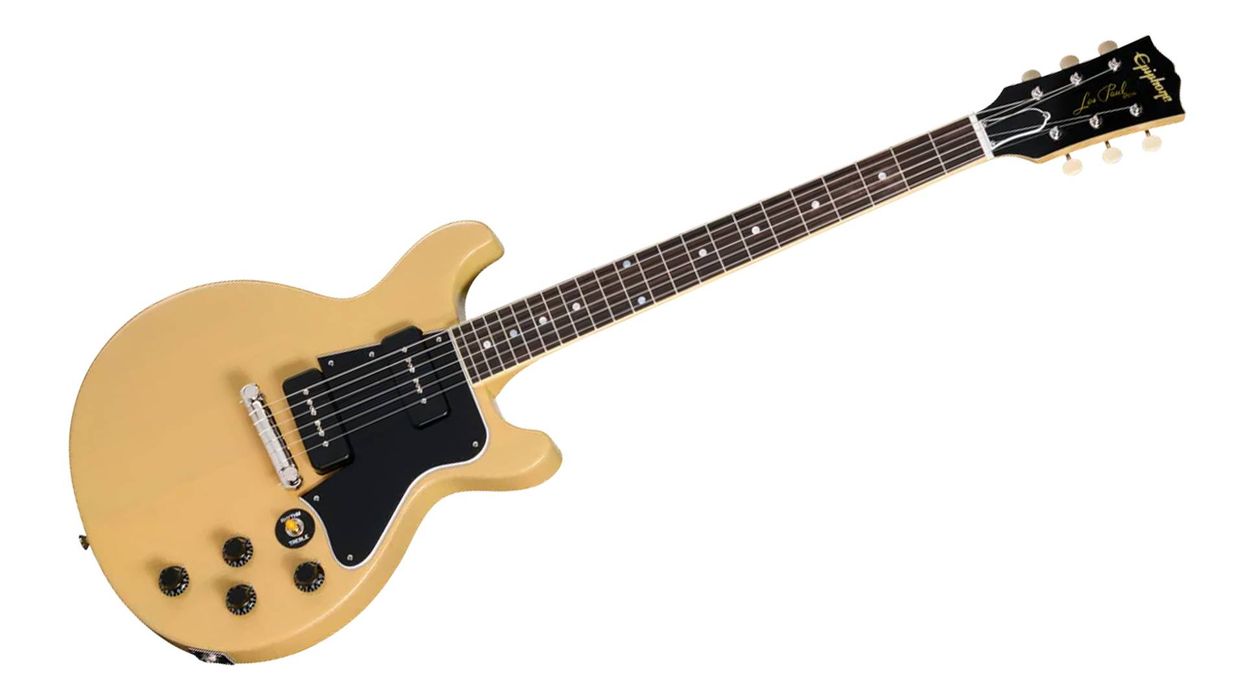A luthier’s world consists of wood, chisels, specialized glue, a
well-worn workbench, and other tools of the trade. But a
professional builder has to deal with other things, too. The email
exchange below offers a glimpse into the boutique builder’s reality.
This exchange between me and Bonni Lloyd, the director of sales
and marketing for Pantheon Guitars (the company that distributes
my instruments), is fictitious but taken from real correspondence.
“Stan” is a combination of several players we’ve known, and he’ll be
quite familiar to anyone who crafts guitars for a living.
Hey Dana:
I just got an email from a guy who
fell in love with a Bourgeois dreadnought
he played in a local dealer’s
shop. Now he’s interested in ordering
a custom guitar. Can you help me
answer his questions? Here’s his letter.
Greetings! I recently played one
of your Vintage Dreadnoughts—Brazilian rosewood and
Adirondack top. Superb guitar!
I’m thinking about ordering an
OM. I’m really a fingerstyle player,
so I’m wondering if this would
sound better with a European
spruce top. What differences can I
expect between Adi and European
tops (both having Brazilian back
and sides)? And can an OM
can have the “oomph” of the
dreadnought I played at the shop?
Regards, Stan B.
Below is my response. Can you add
anything to it? —Bonni
Hi Stan:
First of all, Adirondack and
European spruce are at opposite
ends of the same rainbow.
European spruce is a good choice
for fingerstyle players, because it
can achieve full harmonic complexity
even when played lightly.
Likewise, OMs are good for fingerstylists
because of their superior
note-to-note and string-to-string
balance. As for an OM having
the “oomph” of a dreadnought,
it depends on the definition of
“oomph.” Dreadnoughts have
oomph. OMs have a different kind
of oomph. If you want an OM
that sounds as close as possible to
the dreadnought you played at the
store, my suggestion is to allow
Dana to choose the woods with
that in mind. —Bonni
Dana:
Stan has a few more questions.
Please read his letter below and
comment. —Bonni
Hello Bonni:
Thanks for answering my questions.
I recently read what Dana
wrote about tonewoods online.
His article suggests that ebony
has damping properties and slow
velocity of sound. Can you compare
and contrast the sound quality
and volume of a steel-string
built with ebony vs. Brazilian
rosewood fretboards, ebony vs.
Brazilian rosewood bridges, and
maple vs. Brazilian rosewood
fretboards? —Stan
Bonni:
Fretboards and bridges have a relatively
minor effect on the tone of
an individual guitar. Much more
important are the guitar’s design,
its top and back materials, and
the experience of the luthier who
builds it. —Dana
Dana:
Didn’t you say in that article that
Brazilian rosewood sounds better
than ebony? And now it’s on
the internet, so it has to be true!
—Bonni
Bonni:
I concur with your advice that Stan
should let me pick the woods that
make the most sense for the type of
sound he’s after. Picking wood isn’t
always about theory. Sometimes I
go with my gut, which is informed
by years of looking at and tapping
and flexing wood. And, yes, having
the occasional privilege of hearing
my guitars in the hands of truly
great players. (Doc Watson never
asked me to justify wood selection!)
If I get a sound in my head, I can
usually recognize the right wood for
the job. —Dana
Dana:
I told Stan that bridge, fretboard,
and bridge plate selection are
secondary, if not tertiary, considerations,
and shouldn’t be selected
until after other decisions are finalized.
Alas, at this point, none are.
Nevertheless, here’s another question
from Stan I need your help with:
Hello Bonni:
Has Dana ever considered making
an OM with another inch
of depth to bring out more volume
and mid-end resonance? Or
is there another model you folks
produce that does this? —Stan
What do you think? —Bonni
Bonni:
Let’s get back to square one: Stan
played one of our dreadnoughts and
said it might be the finest guitar he’s
ever played. Anytime someone finds
a guitar fitting that description, I recommend
buying it as quickly as possible!
Does it make sense to custom
order something entirely different
and hope it comes out better than the
best guitar you’ve ever played? We’re
about to ship an OMC to the same
dealer. Why doesn’t Stan A/B the
OMC with the Brazilian D and give
us his feedback? —Dana
Dana:
Great advice—Stan checked out
the OMC and bought it! Just a
couple of issues, though. Please
read the email below and advise
how I should respond. —Bonni
Greetings Bonni:
I bought the OMC on Friday
and spent all weekend playing it.
It’s extremely well balanced and
everything is present. It may be the
best OM I’ve ever played. I noticed,
however, that the back and sides
are not fully quartersawn. Does
this affect the sound? Also, is the
Brazilian old growth or stump
wood? I’ve heard there’s quite a
difference. Lastly, there’s a bit of
runout slightly noticeable at the
top’s center seam. Would a top with
less runout sound different? —Stan
Bonni:
Aren’t guitars supposed to be about
the experience of playing, as opposed
to the experience of thinking about
them? —Dana
Dana Bourgeois has been designing and building guitars for 30 years, and has worked as a consultant for several leading American guitar manufacturers. In 1995, he established Bourgeois Guitars. Working with a handful of dedicated craftsmen in Lewiston, Maine, Dana currently builds about 400 guitars a year that bear his name.















